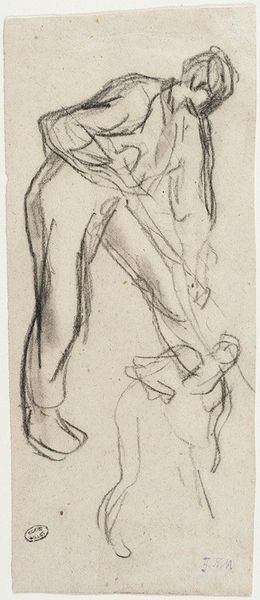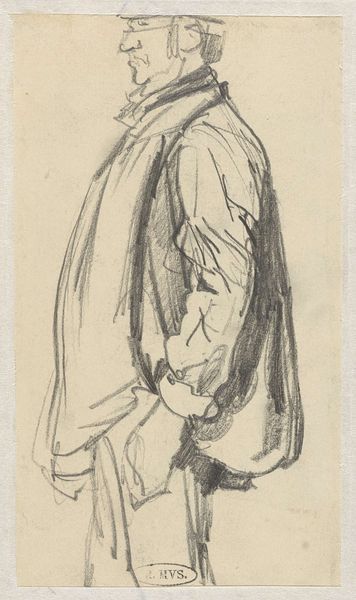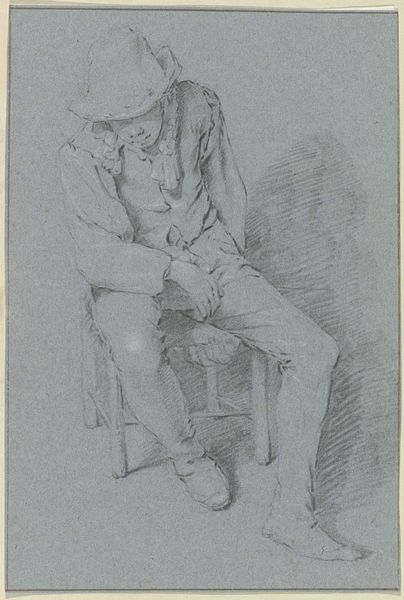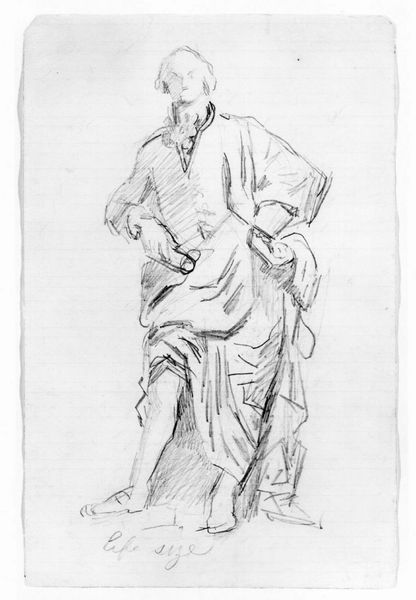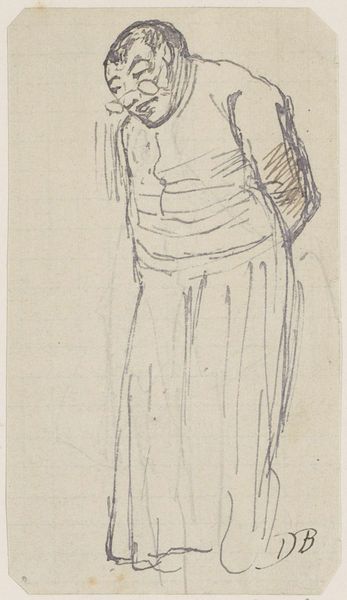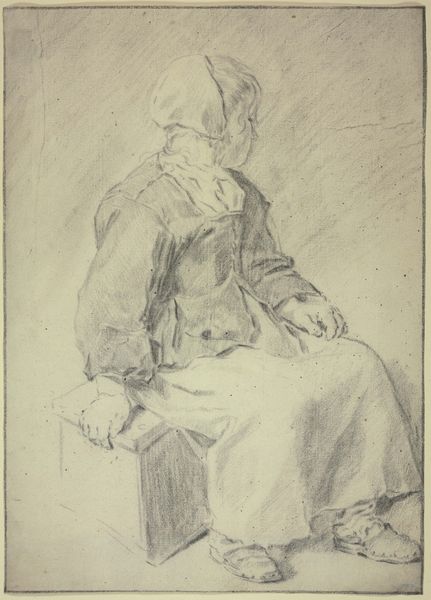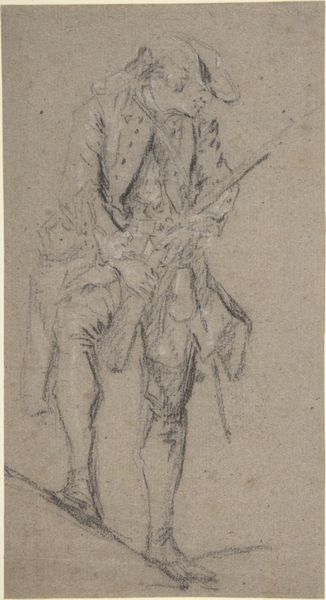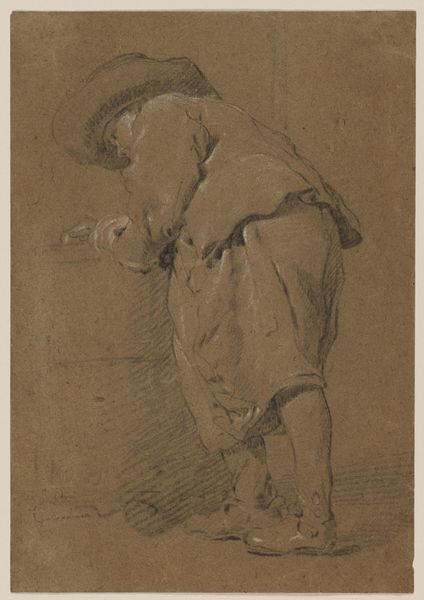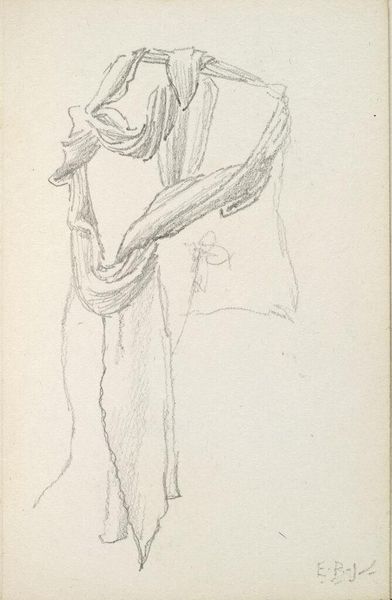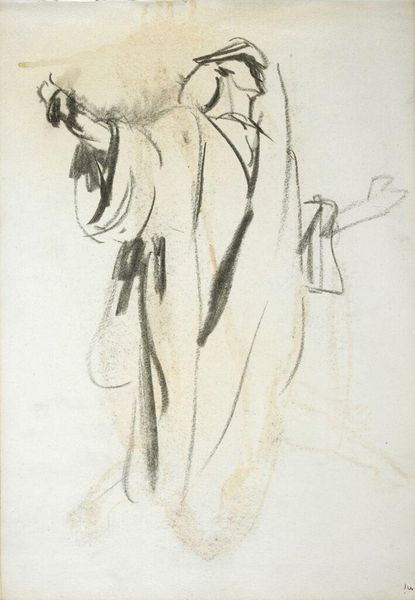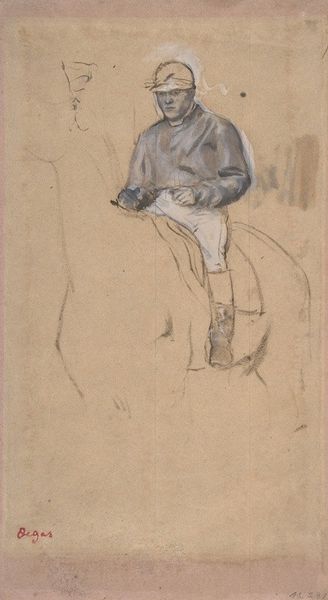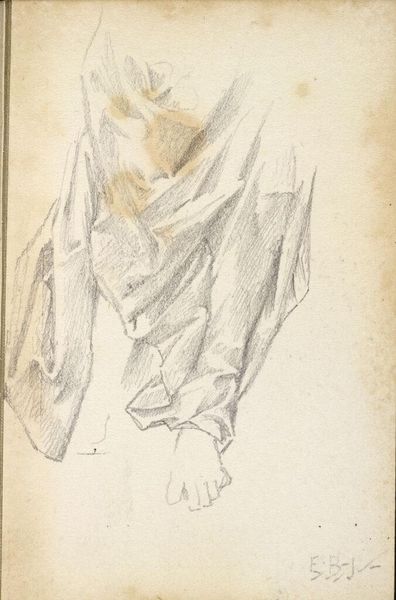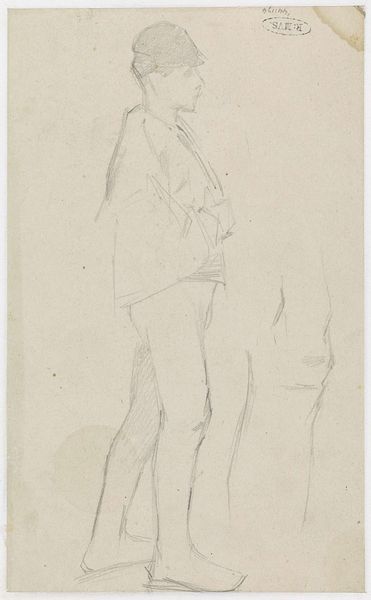
drawing, paper, pencil
#
portrait
#
drawing
#
amateur sketch
#
toned paper
#
light pencil work
#
pencil sketch
#
incomplete sketchy
#
figuration
#
paper
#
personal sketchbook
#
romanticism
#
pencil
#
sketchbook drawing
#
pencil work
#
genre-painting
#
sketchbook art
#
realism
#
initial sketch
Dimensions: height 176 mm, width 123 mm
Copyright: Rijks Museum: Open Domain
Editor: This sketch, “Zittende, slapende man,” or “Sitting, Sleeping Man,” is by Simon Andreas Krausz, created sometime between 1770 and 1825. It's a pencil drawing on paper, and it has such a fragile, vulnerable feel. What draws your eye when you look at this piece? Curator: The power here rests in the everyday rendered monumental. Sleeping figures have long held symbolic weight – think of *Endymion*, eternally asleep, forever young, touched by divinity. What could this suggest about our sleeping man? Editor: That's a wonderful comparison! I was focused on the immediacy of the sketch and his apparent weariness. Are you saying Krausz might be implying something more enduring? Curator: Perhaps. Consider the period – the late 18th, early 19th century. A time of revolution and upheaval, yes, but also burgeoning Romanticism. A turn inwards. Could sleep here signify a retreat from external pressures, a quest for inner peace or even revelation, which later artists like Goya explored so profoundly? Look at the light pencil work; it doesn’t quite complete him, does it? Almost like he is disappearing. Editor: That’s fascinating! I hadn’t considered the social context quite so deeply. It really reframes the image from one of simple fatigue to something potentially profound. The incompleteness as vulnerability or a sort of shedding of worldly concerns. Curator: Indeed. And the beauty of a sketch lies in its very lack of resolution. It invites *us* to complete the image, to project our own anxieties and hopes onto this sleeping figure. What do *you* bring to the encounter? What stories do you overlay? Editor: I think I was originally bringing a modern sense of exhaustion. But I can see that he's inviting contemplation far beyond my initial reading. Curator: Art invites continuous reinterpretation. Symbols shift; their meanings accrete with the passage of time. We co-create their significance with every viewing. Editor: I learned how potent symbols remain over time, shifting shape with each viewing, carrying memories, almost like an ongoing conversation. Curator: Precisely! Now you’re reading as an iconographer.
Comments
No comments
Be the first to comment and join the conversation on the ultimate creative platform.
